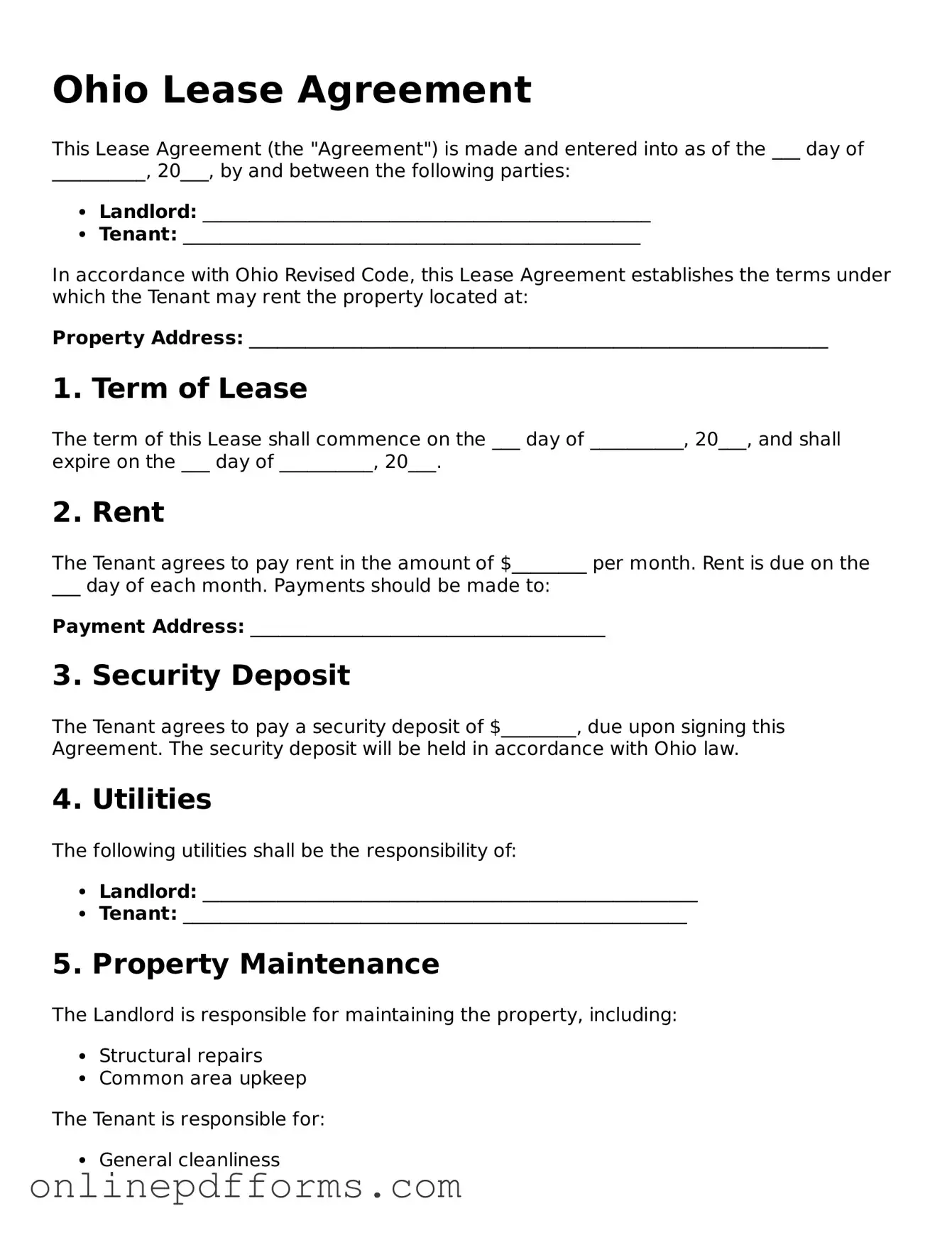The Ohio Lease Agreement form shares similarities with the Residential Lease Agreement, which is commonly used across the United States. Both documents outline the terms and conditions under which a tenant can occupy a rental property. They typically include details such as the rental amount, duration of the lease, and responsibilities for maintenance. The Residential Lease Agreement is tailored to residential properties, ensuring that both landlords and tenants understand their rights and obligations in a straightforward manner.
Another document that resembles the Ohio Lease Agreement is the Commercial Lease Agreement. This type of lease is specifically designed for businesses renting commercial space. Like the Ohio Lease Agreement, it includes essential elements such as rent, lease duration, and maintenance responsibilities. However, it often contains additional clauses related to business operations, zoning laws, and modifications to the property, reflecting the unique needs of commercial tenants.
The Month-to-Month Rental Agreement is also similar to the Ohio Lease Agreement, but it operates on a more flexible basis. This type of agreement allows tenants to rent a property on a month-to-month basis without a long-term commitment. While it includes many of the same terms as the Ohio Lease Agreement, such as rent and notice periods for termination, it provides both parties with the freedom to adjust their arrangements more easily.
Another related document is the Sublease Agreement. This agreement allows a tenant to lease their rented property to another individual, effectively becoming a landlord themselves. Like the Ohio Lease Agreement, it outlines the terms of occupancy, rent, and responsibilities. However, it also includes stipulations regarding the original tenant’s obligations to the landlord, ensuring that both parties are aware of their rights and responsibilities.
The Rental Application form is another document that shares a connection with the Ohio Lease Agreement. Before signing a lease, prospective tenants typically fill out a rental application. This form collects essential information about the tenant, such as employment history and creditworthiness. The information gathered helps landlords make informed decisions about who to rent to, setting the stage for a smooth lease agreement process.
The Lease Renewal Agreement is closely related as well. Once the initial lease term ends, tenants and landlords can choose to renew the lease. This document outlines the new terms, which may include changes in rent or lease duration. It ensures that both parties agree to continue the rental relationship under specified conditions, similar to the original Ohio Lease Agreement.
Lastly, the Rent-to-Own Agreement resembles the Ohio Lease Agreement in that it includes elements of leasing but also incorporates an option for the tenant to purchase the property at a later date. This type of agreement typically outlines the terms of rent, the purchase price, and the timeline for making the purchase. It combines elements of leasing and buying, providing tenants with a unique opportunity to eventually own the property they are renting.
